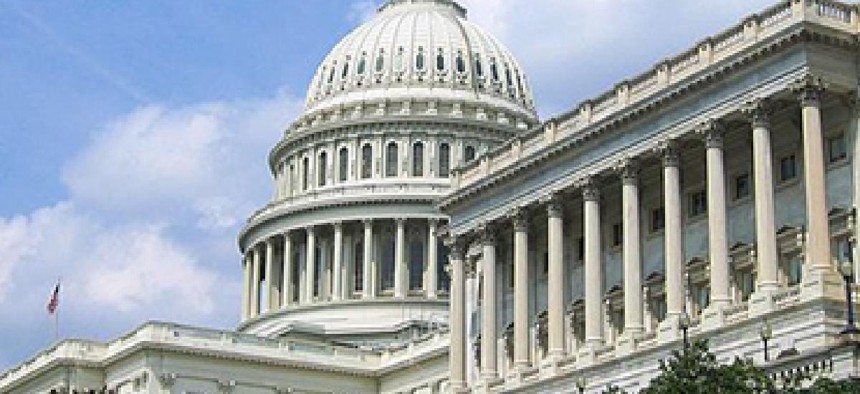CIO authority figures into House and Senate defense bills

The House and Senate versions of the defense authorization bill include different provisions that have major implications for federal CIOs’ authority.

When Congress returns from its August recess, passing a defense authorization bill will be on the short list of must-do items for the fall. Both the House and Senate versions include provisions that have major implications for federal CIOs’ authority.
The House passed a defense bill in June that includes an overhaul of federal IT organizational charts and acquisition rules. The Federal IT Acquisition Reform Act (FITARA) would give civilian agency CIOs budget and hiring authority, and make the position a presidential appointment that requires Senate confirmation.
The Senate defense authorization measure, approved by the Armed Services Committee and awaiting floor action, includes a provision bolstering the authority of the Defense Department’s CIO by designating the current deputy chief management officer (DCMO) as an undersecretary and putting authority for IT under that new position.
At first glance there appear to be some synergies between the CIO provisions in FITARA and the Senate’s plan to elevate the position’s authority at DOD. FITARA specifically excludes DOD from its purview, although the bill is highly relevant to defense IT spending because it covers billions of dollars in acquisitions made via governmentwide contracts run by civilian agencies. Still, the omission of DOD was cited as a deficiency in FITARA by U.S. CIO Steven VanRoekel in one of his few public comments on the bill.
Rep. Gerry Connolly (D-Va.), a co-sponsor of FITARA, said he thinks the two provisions complement each other because “each addresses the same critical issue -- the need to strengthen and empower federal CIOs by creating clear lines of responsibility, authority, and accountability over IT investment and management decisions.”
An aide to Rep. Darrell Issa (R-Calif.), chairman of the House Oversight and Government Reform Committee, agreed. “The two approaches are very similar. FITARA, like Section 901 of the Senate [defense bill], elevates the CIO to a presidentially confirmed position. In so doing, it empowers the CIO function in many of the ways that FITARA does. Reinforcing the role and stature of the CIO function within agencies is widely recognized by [the Office of Management and Budget] and the administration as a key requirement to addressing the waste and duplication in federal IT systems.”
The effort to reform financial management at the Pentagon goes back to the first term of President George W. Bush. David Walker, then comptroller general, led an effort to cut billions in waste with a management restructuring. The Government Accountability Office has long recommended a deputy undersecretary for management at DOD, and the establishment of the DCMO position was the product of a compromise among Congress, GAO and DOD.
However, the Senate now wants to reinvigorate management authority at DOD by promoting the DCMO. The measure could make waves because current DCMO Beth McGrath and CIO Teri Takai would see their high-level posts conflated into a single position.
The Senate Armed Services Committee report on the bill reads, “Specifically, change is required to make the DCMO a co-equal of the other undersecretaries of Defense with the independent statutory authorities necessary to introduce and drive implementation of transformational change and improvement in the department’s business operations.”
The measure is not particularly controversial, at least from the point of view of the Senate Armed Services Committee and GAO, a longtime advocate of the new office. Connolly and others say it’s unlikely to serve as a bargaining chip to advance FITARA.
“It’s two different conversations,” said Trey Hodgkins, senior vice president of the Global Public Sector at trade group TechAmerica. The two provisions “reflect a consensus in government that the role of CIO is and should be a critical piece in the decision-making process at the highest level. So you see FITARA reinforcing those positions and clarifying those authorities, and you achieve a similar outcome” in the Senate bill.
Connolly is optimistic that the Senate will eventually add FITARA or something like it to its defense authorization bill, even though no Senate version has been considered by the Homeland Security and Governmental Affairs Committee.
So far, Senate Democrats haven’t tipped their hand on the measure, but Sen. Tom Carper (D-Del.), the committee’s chairman, said at a hearing in June that “despite the Clinger-Cohen Act, agency CIOs are frequently not recognized as the key leaders in managing information technology at an agency.”
FITARA does more than codify CIO authority. It covers contracting, software licensing, cloud computing, training of acquisition personnel and more. Hodgkins, whose group backs some pieces of FITARA and opposes others, expects a few of its sections to be dropped in conference.
“There are pieces that are worth keeping and pieces that need some more work, and that’s how we think the committees will approach it,” he said. “FITARA isn’t an all-or-none proposition.”






